 W
WThe Weimar Republic was the German state from 1918 to 1933, as it existed as a federal constitutional republic. The state was officially the German Reich, and was also referred to as the German Republic. The term "Weimar Republic" refers to the city of Weimar, where the republic's constituent assembly first took place. In English the country was usually simply called "Germany"; the term "Weimar Republic" did not become common in English until the 1930s.
 W
WAdolf Hitler's rise to power began in Germany in September 1919 when Hitler joined the political party then known as the Deutsche Arbeiterpartei – DAP. The name was changed in 1920 to the Nationalsozialistische Deutsche Arbeiterpartei – NSDAP. It was anti-Marxist and opposed to the democratic post-war government of the Weimar Republic and the Treaty of Versailles, advocating extreme nationalism and Pan-Germanism as well as virulent anti-Semitism. Hitler attained power in March 1933, after the Reichstag adopted the Enabling Act of 1933 in that month, giving expanded authority. President Paul von Hindenburg had already appointed Hitler as Chancellor on 30 January 1933 after a series of parliamentary elections and associated backroom intrigues. The Enabling Act – when used ruthlessly and with authority – virtually assured that Hitler could thereafter constitutionally exercise dictatorial power without legal objection.
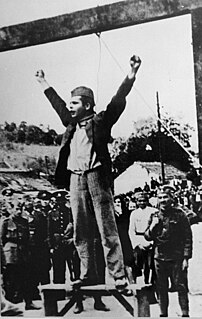 W
WAntifa is a political movement in Germany composed of multiple far-left, autonomous, militant groups and individuals who describe themselves as anti-fascist. According to the German Federal Office for the Protection of the Constitution and the Federal Agency for Civic Education, the use of the epithet fascist against opponents and the view of capitalism as a form of fascism are central to the movement. The antifa movement has existed in different eras and incarnations, dating back to Antifaschistische Aktion, from which the moniker antifa came. It was set up by the then-Stalinist Communist Party of Germany (KPD) during the late history of the Weimar Republic. After the forced dissolution in the wake of Machtergreifung in 1933, the movement went underground. In the postwar era, Antifaschistische Aktion inspired a variety of different movements, groups and individuals in Germany as well as other countries which widely adopted variants of its aesthetics and some of its tactics. Known as the wider antifa movement, the contemporary antifa groups have no direct organisational connection to Antifaschistische Aktion.
 W
WBabylon Berlin is a German neo-noir television series. It is created, written and directed by Tom Tykwer, Achim von Borries and Hendrik Handloegten, based on novels by German author Volker Kutscher. The series is set in Berlin during the latter years of the Weimar Republic, beginning in 1929. It follows Gereon Rath, a police inspector on assignment from Cologne who is on a secret mission to dismantle an extortion ring, and Charlotte Ritter, police clerk by day, flapper by night, who aspires to become a police inspector.
 W
WThe 1932 Berlin transport strike was an industrial labor dispute in Berlin, during the Weimar Republic period of interwar Germany.
 W
WThe Bund Bayern und Reich was a right-wing paramilitary organization based in Bavaria during the Weimar Republic. It became the largest of such organizations in Bavaria throughout the 1920s.
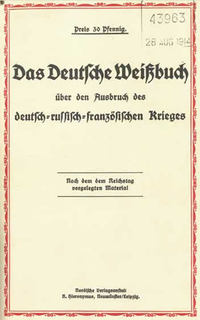 W
WIn diplomatic history, a color book is an officially sanctioned collection of diplomatic correspondence and other documents published by a government for educational or political reasons, or to promote the government position on current or past events. The earliest were the British Blue Books, dating to the 17th century. In World War I, all the major powers had their own color book, such as the German White Book, the Austrian Red Book, Russian Orange Book, and more.
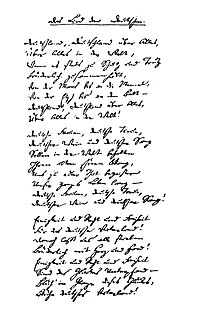 W
WThe "Deutschlandlied", officially titled "Das Lied der Deutschen", or part of it, has been the national anthem of Germany since 1922. In East Germany, the national anthem was "Auferstanden aus Ruinen" between 1949 and 1990.
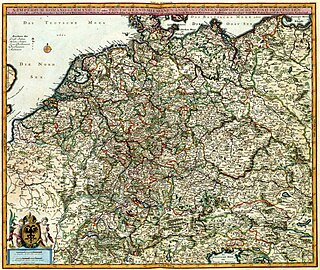 W
WGerman Reich was the constitutional name for the German nation state that existed from 1871 to 1945. The Reich became understood as deriving its authority and sovereignty entirely from a continuing unitary German "national people", with that authority and sovereignty being exercised at any one time over a unitary German "state territory" with variable boundaries and extent. Although commonly translated as "German Empire", the word Reich here better translates as "realm" or territorial "reach", in that the term does not in itself have monarchical connotations. The word Kaiserreich is applied to denote an empire with an emperor; hence the German Empire of 1871–1918 is termed Deutsches Kaiserreich in standard works of reference. From 1943 to 1945, the official name of Germany became – but was not formally proclaimed – Großdeutsches Reich on account of the additional German peoples and associated territories annexed into the state's administration before and during the Second World War.
 W
WGerman–Soviet Union relations date to the aftermath of the First World War. The Treaty of Brest-Litovsk, dictated by Germany ended hostilities between Russia and Germany; it was signed on March 3, 1918. A few months later, the German ambassador to Moscow, Wilhelm von Mirbach, was shot dead by Russian Left Socialist-Revolutionaries in an attempt to incite a new war between Russia and Germany. The entire Soviet embassy under Adolph Joffe was deported from Germany on November 6, 1918, for their active support of the German Revolution. Karl Radek also illegally supported communist subversive activities in Weimar Germany in 1919.
 W
WThe Left Communists were a group of members of the Reichstag and the Prussian Landtag expelled from the Communist Party of Germany (KPD) in the period 1926–1928.
 W
WThe list of Left Communist organisations in the Weimar Republic includes groups and organisations associated with left communism. Some of them are groups of the left-wing opposition of the Communist Party of Germany (KPD) who opposed the course of KPD leadership both within and without the party, especially against the Stalinization. They formed party factions in the KPD, were excluded or broke away to form independent groups.
 W
WThe Münchener Post was a socialist newspaper published in Munich, Germany, from 1888 to 1933. The paper was known for its decade-long campaign against Adolf Hitler and the Nazi Party before their accession to power. It was shut down by Hitler in March 1933 immediately after he became the Reich Chancellor.
 W
WThe Reich Ministry of Transport was a cabinet-level agency of the German government from 1919 until 1945, operating during the Weimar Republic and Nazi Germany. Formed from the Prussian Ministry of Public Works after the end of World War I, the RVM was in charge of regulating German railways, roadways, waterways, and the construction industry - a kind of infrastructure agency in today's understanding. In the 1920s, the Ministry's involvement in the rail sector was limited to administrative and technical supervisory functions. The National Railway was initially organized as an independent state-owned company to guarantee that Germany paid war reparations according to the provisions of the 1924 Dawes Plan.
 W
WThe Federal Ministry of the Interior, Building and Community, abbreviated BMI, is a cabinet-level ministry of the Federal Republic of Germany. Its main office is in Berlin, with a secondary seat in Bonn. The current minister of the Interior, Building and Community is Horst Seehofer. It is comparable to the British Home Office or a combination of the US Department of Homeland Security and the US Department of Justice, because both manage several law enforcement agencies.
 W
WThe Rhenish Republic was proclaimed at Aachen (Aix-la-Chapelle) in October 1923 during the occupation of the Ruhr by troops from France and Belgium and subjected itself to French protectorate. It comprised three territories, named North, South and Ruhr. Their regional capitals were, respectively, Aachen, Koblenz and Essen.
 W
WSchule am Meer, Engl. School by the Sea, Hebrew בית ספר ליד הים, also known as S.a.M. or SaM, was a private, holistically oriented coed progressive boarding school on the East Frisian island of Juist in the Free State of Prussia of German Reich, located between Wadden Sea and North Sea.
 W
WThe Sicherheitspolizei, or security police, was a Militarized German police group set up in most states of the Weimar Republic at the end of 1919 and largely financed by the central government. In its anti-riot role it can be seen as roughly analogous to the Bereitschaftspolizei in today's Federal Republic.
 W
WThe Silesian Eagle was a medal awarded for fighting the Silesian Uprisings as part of the Freikorps Oberland under the Weimar Republic.
 W
WThe Spartacus League was a Marxist revolutionary movement organized in Germany during World War I. The League was named after Spartacus, leader of the largest slave rebellion of the Roman Republic. It was founded by Karl Liebknecht, Rosa Luxemburg, Clara Zetkin, and others, their goal being an international proletarian revolution in order to overthrow capitalism, imperalism and militarism worldwide. The League subsequently renamed itself the Kommunistische Partei Deutschlands (KPD), joining the Comintern in 1919. Its period of greatest activity was during the German Revolution of 1918, when it sought to incite a revolution by circulating the newspaper Spartacus Letters.
 W
WThe stab-in-the-back myth was an antisemitic conspiracy theory, widely believed and promulgated in right-wing circles in Germany after 1918. The belief was that the German Army did not lose World War I on the battlefield, but was instead betrayed by the civilians on the home front, especially Jews, revolutionary socialists who fomented strikes and labor unrest, and other republican politicians who had overthrown the Hohenzollern monarchy in the German Revolution of 1918–1919. Advocates of the myth denounced the German government leaders who had signed the Armistice on 11 November 1918 as the "November criminals".
 W
WThe Territory of the Saar Basin was a region of Germany occupied and governed by the United Kingdom and France from 1920 to 1935 under a League of Nations mandate. It had its own flag : a blue, white, and black horizontal tricolour. The blue and white stood for Bavaria, and white and black for Prussia, out of whose lands the Saar Territory was formed. Initially, the occupation was under the auspices of the Treaty of Versailles. Its population in 1933 was 812,000, and its capital was Saarbrücken. The territory closely corresponds with the modern German state of Saarland, but was slightly smaller in area. After a plebiscite was held in 1935, it was returned to Germany.
 W
WTechnische Nothilfe was a German organisation. It began as a strikebreaker organisation after the First World War, but developed into a volunteer emergency response unit. During the Nazi period TN became in charge of technical civil defence.
 W
WThe Von Schleicher Cabinet de jure formed the government of Weimar Germany between 3 December 1932 and 28 January 1933 upon the resignation of Franz von Papen. The cabinet was made up of holdovers from Papen's which featured many right-wing independents or German National People's Party (DNVP). The government was followed by the Hitler Cabinet after Schleicher's own resignation. This was to be the last Weimar government before the rise of Nazi Germany.
 W
WThe war guilt question is the public debate that took place in Germany for the most part during the Weimar Republic, to establish Germany's share of responsibility in the causes of the First World War. Structured in several phases, and largely determined by the impact of the Treaty of Versailles and the attitude of the victorious Allies, this debate also took place in other countries involved in the conflict, such as in the French Third Republic and the United Kingdom.
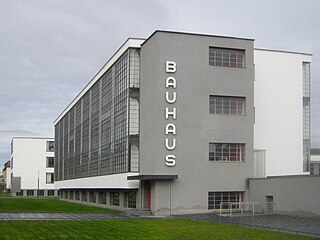 W
WWeimar culture was the emergence of the arts and sciences that happened in Germany during the Weimar Republic, the latter during that part of the interwar period between Germany's defeat in World War I in 1918 and Hitler's rise to power in 1933. 1920s Berlin was at the hectic center of the Weimar culture. Although not part of the Weimar Republic, some authors also include the German-speaking Austria, and particularly Vienna, as part of Weimar culture.